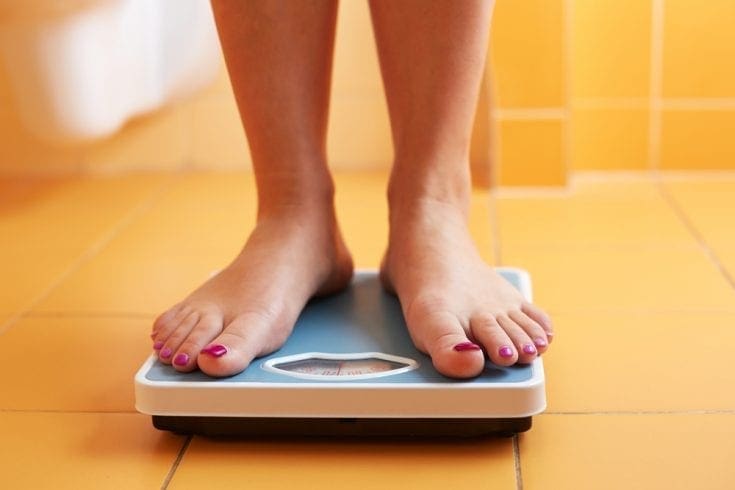
Recovery from hip replacement surgery can vary from person to person. A research study concluded that people who followed a progressively increasing level of exercise during the recovery phase, gained more positive outcomes compared to those who didn’t increase their exercise levels (1).
Hip Replacement Recovery Time: How long does it take?
Here is an example of a typical timeline for recovery from hip surgery:
Usually, a hip replacement patient can:
- Be discharged from the hospital in one to three days. However, if you’re having an outpatient hip replacement, you can go home on the same day (2) .
- Resume the majority of your daily activities within the six week period following surgery.
- Regain much of the endurance and strength that was lost within three months of the surgery.
What are the Different Stages of The Recovery Timeline?
Day of Surgery – Post-Operative Day Zero – Recovery from Hip Replacement Surgery
Early mobility is important for improving blood circulation and avoiding blood clots formation; therefore you can expect this to begin the day of your surgery.
Goals
- After the completion of the surgery, you will be encouraged to sit up in a chair for meals and walk to the bathroom (with assistance).
- You will be expected to move your feet
- A pillow may be placed between your legs to prevent your legs from crossing.
- You should try to do the bed exercises (with assistance) as described in the table below.
Bed Exercise
| Exercises | How To Perform? | Repetition |
|---|---|---|
| Breathing |
| 6 times, every hour |
| Foot and ankle pump |
| 10 times, every hour |
| Lower buttock squeeze |
| 6 – 8 times, 3 times a day |
| Hip Flexion |
| 10 times. |
| Knee Flexion (in a lying position) |
| 10 times per day |
| Leg slide out |
| 6 – 8 times, 3 times a day |
| Straight Leg Raise (in a lying position) |
| 5 times |
You can start bed exercises immediately after surgery with the help of a physiotherapist.
Post-Operative Day One/Two
Most patients go home on postoperative day one or two.
Goals
- You will be encouraged to be as independent as possible.
- You will be encouraged to attend to your hygiene and continue with mobilizing, including practicing stair climbing if appropriate.
- You will be encouraged to do the bed exercises as described in the above table.
- Discharge plans may be discussed.
Discharge Day
Occasionally discharge times can be delayed if a patient requires further medical intervention or an additional physiotherapy assessment.
Goals
You are likely to be discharged if you meet the following goals:
| Therapy Goals | Medical Goals |
|---|---|
| To have a precise understanding of your recovery stages. | Blood tests are stable. |
| Independently complete your exercises. | Stitches are healing well. |
| Independently walk short distances (e.g. to the bathroom) with a walker. | Pain is well managed. |
| Be able to climb stairs (with assistance) if you have them at home. | Health status is at baseline (e.g. blood pressure, heart beat rate, temperature and oxygen levels) |
| Manage some personal care (e.g. getting dressed). | - |
| Get in and out of bed by yourself. | - |
Activity Management At Home
Bed Transfers
| Positioning in Bed | How to Get In and Out of Bed |
|---|---|
|
|
Sitting And Standing On Chair/Commode
| To Sit | To Stand Up |
|---|---|
|
|
Stair Climbing
| Step up | Step Down |
|---|---|
|
|
Dressing
- While dressing, first place your surgical leg on your pants, underwear, or shorts, and then try to pull the garment up to your knee.
- Now, put the nonsurgical leg into the pant, stand straight and pull the pants up.
- While changing clothes, take assistance or support.
Getting In/Out of A Car
- With the assistance of a support such as a walker or frame, recline the seat and move it back as far as possible.
- Back up to the car seat and place your surgical leg in front of you.
- Try to sit in the car with one hand on the seat by leaving the other hand on the walker.
- By using your arms and non-operated leg, scoot yourself into the seat so you can place your operated leg into the car without twisting or bending.
- To help direct your surgical leg into the car, utilize your arms and hands.
Sleeping/Lying Down
- In the first few weeks after surgery, you may suffer from sleeping problems.
- Sleeping on your back is better for good alignment until you can sleep on your side comfortably.
- Choose the most comfortable side.
- Place a pillow between your legs so that your surgical leg doesn’t drop onto your nonsurgical leg. Avoid crossing your legs.
Week 1-3 After Hip Surgery

Your goals for this time period are to:
- Ascend and descend a few steps stairs more than once daily.
- If suitable, walk about ¼ mile daily.
- Gradually wean yourself from full support on your walking aids to a single stick or crutch (only if recommended by your physiotherapist).
- Resume general housekeeping tasks such as light dusting, washing up, and ironing.
- Continue with bed exercises and the below-listed exercises.
Standing Exercises
| Exercises | How to Perform? | Repetition Per Day |
|---|---|---|
| Hip Flexion (in a standing position) |
| 10 times |
| Hip Slide Out (in a standing position) |
| 10 times |
| Hip Extension Stretch (in a standing position) |
| 3 times |
| Hip Extension with Lift (in a standing position) |
| 10 times |
| Weight Transfers |
| 5 times |
| Squats |
| 5 times |
Standing-based exercises are recommended at least 3 times a day for at least 6 weeks but you can continue them if you still find them of benefit.
Weeks 3-6 After Hip Surgery
During this time phase, you will notice a greater recovery to full independence. You can perform some light activities at this point in your recovery. However, the activities you’re allowed to perform will depend on how your body is healing.
Your goals for this time phase are to:
- Normalize all functional mobility.
- Walk in a normal pattern to wean yourself off all assistive devices at the end of this phase (unless specified by your surgeon).
- Walk about half a mile every day (if suitable)
- Start climbing stairs one step at a time to return to normal stair climbing.
- Perform all exercises as specified by your physiotherapist.
Advanced Exercises
| Exercises | How to Perform? | Repetition per Day |
|---|---|---|
| High Knee Marching |
| 10 times |
| Single Leg Stance |
| 5 times |
| Step Up & Down |
| 5 times |
| Side Step & Squat |
| 5 times |
| Clam (side lying) |
| 10 times |
| Hip Extension (prone lying) |
| 10 times |
| Hip Abduction (side lying) |
| 10 times |
These exercises are recommended approximately 3 weeks post-surgery. Progress onto these exercises only if you feel you’re able to.
Weeks 6-12 After Hip Surgery
By this time, you should be able to gradually return to your normal activities.
Your goals for this time phase are to:
- Return to baseline functional activities.
- Continue to improve strength to maximize functional outcomes.
- If suitable, walk 1/2 mile – 1 mile daily.
- Resumption of all previous activities including dancing, bowling, and golf.
Timeframe of Resuming Physical activities
| Activity | Time-Period Resumed Post Surgery |
|---|---|
| Walking with a walker or crutches | 1-4 days |
| Walking with a cane | 4 weeks |
| Unassisted walking | 6-8 weeks |
| Driving | 2-6 weeks |
| Limited work (seated) | 3 weeks |
| Work (standing/active) | 6-8 weeks |
| Sports activities | 6 weeks |
Speak with your healthcare provider, as these are general timeframes for resuming physical activities safely. The best time frames for your individual situation can differ from what are listed here.
Medical Equipment You Might Need After HRS
| Bedroom | Bathroom | Living Room |
|---|---|---|
| Bedside Commode | Elevated Toilet Seat With Grab Bar | 2-Wheeled Walker |
| Bed Rail | Metal Grab Bar | Firm (High-Density) Foam Cushion |
| Sock Aid | Non-Slip Bath Mat | Cane/Crutches |
| Reacher | Medical Bathtub Shower Lift Chair | Leg Lifter Strap |
| Long-Handled Shoehorn | Long-Handled Bath Sponge | - |
| Dressing Stick | Toilet Safety Frame | - |
Latest Technology To Monitor Recovery
Remote patient monitoring technology has been developed to assist in the recovery from hip replacement surgery and is intended to be used at home during the recovery period of eight to 12 weeks after the operation.
This sensor technology comprises:
- Physiological sensing: These systems have posture and load sensors that help measure the orientation and posture of the hip and the legs. The patient is informed by this system with an audio signal or vibration if the position of the operated hip or the load put on the operated hip approaches set limits.
- Communication interface: This is in the form of hardware or software to gather physiological and motion data of the patient and inform them to follow the safety measures.
Below are some remote-patient-monitoring technologies:
If you are considering having a hip replacement, you may like to read our comprehensive guide to the cost of hip surgery in the UK, which lists the surgeons, hospitals and the prices in your area.
Conclusion
Your recovery from hip replacement surgery starts as soon as the anaesthesia wears off. As each patient has different needs, it is vital that you seek the advice of your surgeon or doctor before embarking upon any exercise programme.
Therefore it is essential that you talk to your doctor about what the recovery period involves in your case, as it helps you to achieve the best outcome.
The best way you can speed up and improve your recovery from hip replacement surgery is by making sure you take regular exercise which will restore strength and mobility to your hip.
But don’t overdo it! This exercise should be balanced with periods of rest to allow yourself time to recover.
By being aware of the different stages of the timeline following the operation and by following the exercise guidelines set out, you should ensure a full and speedy recovery from hip replacement surgery.









